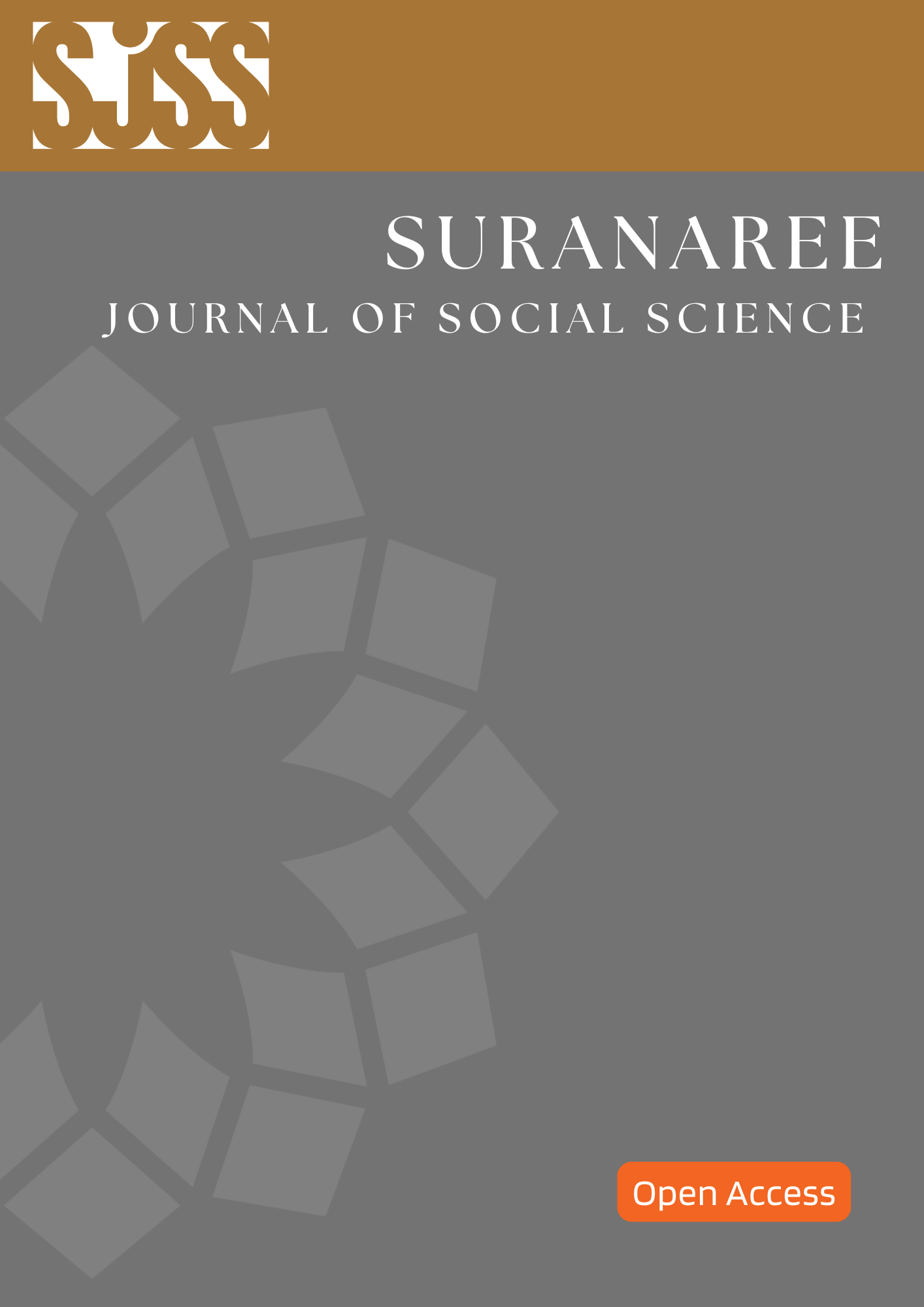Development of Visual Product Creativity Indicators for Grade 4-6 Students
Main Article Content
Abstract
Nowadays, Individuals with product creativity are in demand in the labor market. Therefore, Thai education needs to develop product creativity for students from studying documents And related research found that There has not been any study of product creativity regarding indicators and explain the indicators of product creativity so the researcher is interested in studying this research to develop indicators and explain the indicators of product creativity of grade 4-6 students by using the delphi techniques.
The results of the research showed that There are 6 indicators for productive creativity and 18 indicators for explanation of indicators. The indicators of product creativity are indicators that focus on students to be able to produce products efficiently. Is in demand among general people. Responsible to the community and the environment. Therefore, the result will be a guideline for teachers use the indicators of product creativity in learning management, assess work and develop students to have higher product creativity so that students can apply for careers and develop the nation to be able to progress with the country.
Article Details

This work is licensed under a Creative Commons Attribution-NonCommercial-NoDerivatives 4.0 International License.
References
Buzan, T. (2002). Get Ahead Dorswt. Florida: Buzan Center.
Chewpreecha, C. (2011). Creative Thinking of Yong Children Acquired Though Banana Leaf Activities. Mester thesis, M.Ed. (Early Childhood Education), Bangkok: Graduate School, Srinakarinwirot University.
Clover, J. (1980). Becoming a More Creative Person. New Jersey: Prentice Hall.
Department of Agriculture. (2012). The synthesis of the model for the development of Thai children's potential in thinking. Bangkok: Kurusapa Printing Ladphrao.
Gray, A. (2016). The 10 skills you need to thrive in the Fourth Industrial Revolution [On-line]. Available: https://www.weforum.org/agenda/2016/01/the-10-skills-you-need-to-thrive-in-the-fourth-industrial-revolution/
Keawsatain, P. (2011). Effects of Using Problem Posing in Organizing Learning Activity Problem Solving Ability and Mathematics Creative Thinking on Probability of Matayomsuksa 5 . Mester thesis, M.Ed. (Mathematics Education), Mahasakham: Graduate School, Rajabhat Mahasarakham University.
Khammanee, T. (2012). 21st Century Skills of the Graduates :The Change of the Curriculum and Teaching. Bangkok: Faculty of Education Chulalongkorn University.
Lee, K. H. (2005, February). The relationship between creative thinking ability and creative personality of preschoolers. International Education Journal. 6(2), 194-199.
Lhimjareon, S. (2009). The Extra- Curriculum Development Enhancing Creativity Thinking in Second-Level Students. Dissertation, Ed.D. (Curriculum Research and Development). Bangkok: Graduate School, Srinakharinwirot University
Lohitsathein, B. (2016). The Education for Sustainable Development: Thailand 4.0 [On-line]. Available: http://www.thaigov.go.th/index.php/th/news-ministry/2012-08-15-09-39-20/item/106545
Masinthee,S. (2016). The concept of Thailand 4.0. [On-line]. Available: http://planning2.mju.ac.th/goverment/20111119104835_
planning/Doc_25590823143652_358135.pdf
Ministry of Education. (2010). The Basic Education Core Curriculum B.E. 2551 (A.D. 2008) . Bangkok: Kurusapa Printing Ladphrao.
Nilsson, P. (2012). Taxonomy of creative design. [On-line]. Available: http://www.senseandsensation.com/2012/03/taxonomy-of-creative-design.html
Office of the Education Council. (2016). Thai Educational Conditions 2014/2015 "How to reform Thai education to catch up with the world in the 21st century?”. Bangkok: Pimdee Printing.
Office of the National Economic and Social Development Council. (2016). The Twelfth National Economic And Social Development Plan (2017-2021) [On-line]. Available: http://www.ldd.go.th/www/files/78292.pdf
Parnes, S.J. (1976). Creative Behavior Work Look. New York: Chaeles Scribner.
Piasiri, S. (2007). A Development of a Training Program for Undergraduate Students with Art Activities to Develop Creative Thinking and Productive Skills. Higher thesis Ph.d. (Higher Education), Bangkok: Graduate School, Faculty of Education Chulalongkorn University.
Ruechaiparnit, W. (2013). Toolkit for Teaching in 21st Century : Creative Teaching [On-line]. Available: http://www.eqd.cmu.ac.th/Innovation/media/2559/2559_06_07-08-Creative/CBL21_handbook.pdf.
Sahuangpon, R. (2015). The Studies of Creativity before and after the Experiment of Art Activities on Menthods of Aree Sudhipan. Master thesis M.Ed. (Art Education), Bangkok: Graduate School. Srinakarinwirot University.
Schmoelz, A. (2017). On Co-Creativity in Playful Classroom Activities. Creativity Theories – Research- Application. 4(1), 25-64.
Sinlarat, P. (2012). The Twenty-First Century Skills and Development of Teaching [On-line]. Available: https://www.slideshare.net/taxiboat/21-23558049
Sternberg, R. J. (2001). The elementary School Training Program in thought. New York: Oxford University Press.
Thanasat, P. (2015). Independent Study Projects design, manufacture and distribution of Fashion Bags. P. M.B.A. (Content Management and Value Creation), Pathumthani: Graduate School, Bangkok University.
Watanakun, O. (2010). A Development of Teaching and Learning Model in Thai for Communication and Study Skills Subject to Enhance University. Dissertation, Ed.D. (Higher Education), Bangkok: Gradute School, Srinakharinwirot University.


